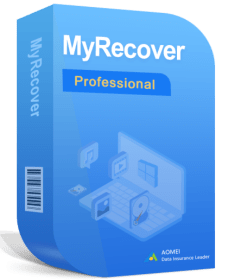How to Fix Outlook Mailbox Full After Deleting Error
This article demystifies the predicament many Outlook users face – a mailbox insisting it's full despite rigorous deletions. Fusing a relatable first-person narrative, an exploration of potential causes, and 5 proven fixes with backgrounds and steps, this guide empowers users to reclaim their mailbox space.
User Case
As I worked to clean out my Outlook mailbox and meticulously deleted unnecessary emails to create a leaner, more organized digital space, I encounter this error: Outlook mailbox full after deleting.
This situation left me puzzled and frustrated, wondering why the mailbox was not reflecting the cleanup I had undertaken. In search of a solution, I sought to understand the reasons behind this issue and find effective fixes to restore the efficiency of my Outlook mailbox after deleting messages.
Why Outlook Mailbox Full After Deleting?
The issue of an Outlook mailbox appearing full after deleting emails can be attributed to several reasons, contributing to the accumulation of data even after deletion. Here are some key factors:
1. Retained Items in "Recoverable Items" Folder:
- Deleted emails are initially moved to the "Deleted Items" folder.
- Permanently deleting emails only moves them to the "Recoverable Items" folder, leading to continued storage.
2. Automated Archiving Settings:
- Automatic archiving settings might be configured to move items to archive folders instead of truly deleting them.
3. Cached Exchange Mode Limitations:
- In Cached Exchange Mode, Outlook stores a local copy of your mailbox, and changes may take time to sync with the server.
4. Deleted Items Size Threshold:
- The "Deleted Items" folder might have reached a size threshold, preventing further deletions until it's reduced.
5. Issues with Email Server Synchronization:
- Problems with synchronizing changes between the Outlook client and the email server can result in discrepancies.
6. Large Attachments or Emails:
- Emails with large attachments may occupy significant space, impacting the available mailbox size.
Addressing these reasons involves a combination of adjusting settings, manually clearing folders, and ensuring proper synchronization between the Outlook client and the email server.
How to Fix Outlook Mailbox Full After Deleting
In this part, you can see how to fix Outlook Mailbox full after deleting error and free up space in Outlook. Try them now!
Method 1: Empty Deleted Items or Recycle Bin
When you delete emails from your Outlook account, they are moved to the Deleted Items or Trash folder. You can configure Outlook to automatically empty the Deleted Items or Trash folder after a period of time, or you can empty the Deleted Items or Trash folder manually.
The steps to permanently delete emails and reduce the size of your mailbox are as follows:
1. In Outlook, right-click the Deleted Items or Trash folder, and then select Empty Folder.
2. Confirm if prompted.
Navigate to File > Options, and then click Advanced.
Click the Empty Deleted Items folder on exit check box under Outlook startup and exit.
On the Advanced options screen, scroll down and click the Prompt for confirmation before permanently deleting items check box.
Method 2: Empty the Mailbox
You can also clean up your mailbox to manage mailbox size and fix Outlook mailbox errors. The Mailbox Cleanup option allows you to check mailbox size, find/filter emails older than a certain date or by size, archive emails, view deleted items folder size, and empty or delete deleted items and conflict folders.
The steps are as follows:
1. Navigate to File > Tools and select Mailbox Cleanup.
2. The AutoArchive option allows you to automatically move old emails to an archive (.pst) that you can open and access locally. This can help you significantly free up mailbox space and fix the error message.
3. You can also select Empty Deleted Items Folder to empty the folder and free up mailbox space.
4. Additionally, the Clean Old Items... option helps you clean up the mailbox by manually moving the older emails to the archive.
Recover Deleted Outlook Emails with MyRecover
In the quest to resolve the perplexing issue of Outlook declaring my mailbox full after deleting messages, I also explored the invaluable process of recovering deleted emails. Utilizing the robust data recovery tool, MyRecover, became a pivotal aspect of my strategy.

- Comprehensive Email Recovery: MyRecover excels in retrieving emails deleted or lost due to various reasons, ensuring a high success rate.
- User-Friendly Interface: The tool boasts an intuitive interface, making it accessible even for users without extensive technical knowledge.
- Diverse Email Formats: MyRecover supports a wide array of email formats, allowing for the recovery of messages from various platforms.
Operating Steps:
Download and install the MyRecover client on your computer. Now, let’s see how to use MyRecover to get your deleted emails:
1. In MyRecover, hover the mouse over the partition or disk where your email files are saved. Click Scan.
2. Then you can see your deleted email files and other missing files after Quick Scan and Deep Scan automatically.
🌟Tips: You can type your filename in the search box or use the Filter feature to find your files quickly.
- Type: include all file types, such as images, videos, documents, emails, webpages, compressed files, etc.
- Data Modified: support today, yesterday, last 7 days, last 30 days, and custom.
- Size: filter file size from less than 128KB to 128KB ~1MB to 1MB ~ 512MB and above, or custom.
3. Next, check the scanning result. You can choose a new location to store your recovered email files. After that, click on the Recover X files button to begin to recover the deleted email in Outlook account.
Conclusion
Armed with these useful solutions and the prowess of MyRecover for email retrieval, you can reclaim your digital workspace. Say goodbye to clutter and welcome an organized and efficient Outlook experience.

